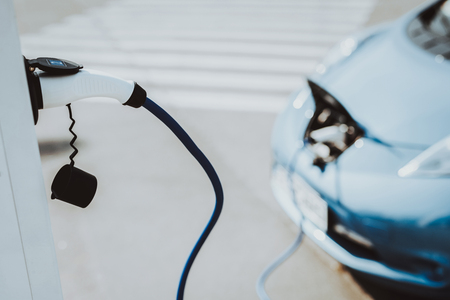Understanding Decarbonisation and Its Importance
Decarbonisation, in the context of UK transport, refers to the strategic reduction and eventual elimination of carbon dioxide (CO2) emissions from vehicles and infrastructure. The UK government has committed to achieving net-zero greenhouse gas emissions by 2050, with the transport sector playing a critical role due to its significant contribution to national emissions. For both individuals and businesses, understanding decarbonisation is not just an environmental responsibility—it is becoming a financial imperative.
From a financial planning perspective, the shift towards cleaner motoring affects everything from personal vehicle choices to corporate fleet management and long-term investment strategies. Individuals must consider the total cost of ownership for electric or hybrid vehicles, including government incentives, reduced fuel costs, and potential tax benefits. Businesses face evolving compliance requirements, opportunities for green financing, and reputation management in an increasingly eco-conscious market.
The Impact on Individuals and Businesses
| Group | Impact | Considerations |
|---|---|---|
| Individuals | Changes in vehicle taxation, access to low-emission zones, eligibility for grants. | Budgeting for new technology; insurance implications; resale value of petrol/diesel cars. |
| Businesses | Regulatory compliance, transition costs for fleets, enhanced CSR profile. | Fleet renewal planning; capital allocation; risk management for policy changes. |
As decarbonisation gathers pace, those who proactively plan for cleaner motoring stand to benefit from lower running costs, greater asset resilience, and alignment with future regulatory standards. Ultimately, decarbonising transport is not just about reducing emissions—its about ensuring sustainable mobility and financial security in a rapidly changing landscape.
Government Roadmap and Ambitions for Cleaner Motoring
The UK government has laid out a comprehensive strategy to decarbonise road transport, setting ambitious goals to transition the country towards cleaner motoring. Central to this effort is the legally binding commitment to end the sale of new petrol and diesel cars and vans by 2030, a milestone intended to accelerate the shift towards electric vehicles (EVs) and alternative fuel technologies.
Key Policies Driving Change
Several landmark policies form the backbone of the UKs roadmap for cleaner transport. These include robust investments in EV charging infrastructure, grants for zero-emission vehicles, and incentives designed to encourage both consumers and manufacturers to embrace sustainable options. The government’s “Transport Decarbonisation Plan” outlines not only emissions targets but also practical steps to help individuals and businesses make the switch.
Legally Binding Commitments and Timelines
| Year | Milestone/Commitment |
|---|---|
| 2021 | Launch of the Transport Decarbonisation Plan |
| 2022-2029 | Scaling up investment in charging infrastructure, public transport improvements, and clean vehicle grants |
| 2030 | Ban on sale of new petrol and diesel cars and vans comes into effect |
| 2035 | All new cars and vans must be fully zero-emission at the tailpipe (including hybrids phased out) |
| 2050 | Target date for net zero emissions across all UK transport sectors |
A Multi-Pronged Approach for Success
The government recognises that achieving these ambitions requires collaboration across industries, local authorities, and communities. Funding schemes such as the Plug-in Car Grant and support for public sector fleet electrification are complemented by awareness campaigns that aim to educate drivers about the benefits of cleaner motoring. With these measures, the UK is positioning itself as a leader in sustainable transport, ensuring not just compliance with environmental obligations but also long-term economic opportunities in the rapidly evolving green mobility sector.

3. Shifts in Technology: Electric Vehicles and Alternative Fuels
The UK is witnessing a rapid evolution in motoring technology as part of its commitment to decarbonising transport. Central to this transformation are electric vehicles (EVs), which have seen significant advancements in both performance and accessibility. The government’s strategy includes supporting the development of a robust charging infrastructure, aiming to make EV ownership convenient across urban and rural communities alike. This shift is not just about replacing petrol cars with battery-powered alternatives; it’s about reimagining the entire ecosystem that supports British motorists.
Advancements in Electric Vehicles
Modern EVs now offer extended ranges, faster charging times, and improved affordability compared to earlier models. Many British manufacturers and international brands are expanding their EV line-ups, making it easier for drivers to find models that suit their lifestyle and budget. Technological improvements in battery chemistry have also contributed to enhanced safety and longer vehicle life spans.
Expanding Charging Infrastructure
A critical component of the UK’s roadmap is the nationwide rollout of public and private charging points. The table below highlights key developments:
| Location Type | Charging Speed | Accessibility Features |
|---|---|---|
| Motorway Service Areas | Rapid (50kW+) | 24/7 Access, Contactless Payment |
| Residential Streets | Fast (7-22kW) | Pavement-integrated, App-enabled Booking |
| Retail & Public Car Parks | Varied (7-150kW) | Free Parking for Charging, Multi-bay Support |
This expansion ensures that charging an EV becomes as routine as refuelling a conventional car, helping to address “range anxiety” among drivers considering the switch.
The Role of Alternative Fuels: Hydrogen and Beyond
Beyond electric power, alternative fuels such as hydrogen are gaining traction within the UK’s green motoring landscape. Hydrogen fuel cell vehicles offer quick refuelling times and longer ranges, making them particularly appealing for commercial fleets and long-distance travel. The government is investing in pilot projects to establish hydrogen refuelling stations and support early adopters across key transport corridors.
Comparing Clean Motoring Technologies
| Technology | Main Advantage | Main Challenge |
|---|---|---|
| Battery Electric Vehicles (BEVs) | Zero tailpipe emissions, home charging available | Charging infrastructure roll-out pace |
| Hydrogen Fuel Cell Vehicles (FCEVs) | Longer range, fast refuelling | Sparse refuelling network currently |
Together, these technological shifts put the UK on track towards meeting its ambitious net-zero goals while providing motorists with a growing range of practical, sustainable choices for cleaner journeys.
4. Financial Implications and Incentives for Drivers
The transition towards low emission vehicles is not just an environmental decision, but a financial one as well. For UK drivers, understanding the available grants, tax incentives, and insurance factors is essential before making the switch. Below, we detail these key aspects with practical guidance tailored to the UK market.
Government Grants for Electric Vehicles
The UK Government offers several grants to encourage the adoption of cleaner motoring. The most notable is the Plug-in Car Grant (PiCG), which provides a discount on eligible new electric vehicles at the point of purchase. While rates and eligibility are subject to periodic review, the table below summarises the current landscape:
| Grant Type | Eligibility | Maximum Value |
|---|---|---|
| Plug-in Car Grant (PiCG) | New fully electric cars under £32,000 | £1,500 off list price |
| Homecharge Scheme | Homeowners installing EV chargepoints | Up to 75% off installation costs (max £350) |
| Workplace Charging Scheme | Businesses installing workplace chargers | Up to £350 per socket (max 40 sockets) |
Tax Breaks and Road Tax Exemptions
Electric vehicle owners benefit from a range of tax breaks in the UK. Most notably, zero-emission vehicles are exempt from Vehicle Excise Duty (VED), commonly known as road tax. Additionally, company car drivers can take advantage of lower Benefit-in-Kind (BiK) tax rates on electric vehicles compared to petrol or diesel alternatives. Below is a comparison:
| Vehicle Type | VED (First Year) | BiK Rate (2024/25) |
|---|---|---|
| Pure Electric Car | £0 | 2% |
| PHEV (CO₂ <50g/km) | £10–£25 | 8% |
| Petrol/Diesel Car | £180–£2,605* | 22–37% |
*Dependent on CO₂ emissions.
Insurance Factors for Low Emission Vehicles
When it comes to insuring an electric or hybrid vehicle, UK drivers may encounter different pricing structures compared to traditional vehicles. Insurers consider factors such as battery replacement costs, specialist repairs, and reduced accident risk due to advanced safety features. It is advisable to shop around, use comparison tools, and inquire about green car discounts that some insurers now offer.
Practical Guidance for UK Drivers Considering the Switch
- Total Cost of Ownership: Factor in lower running costs—electricity typically costs less than petrol per mile and maintenance requirements are reduced.
- Charging Infrastructure: Assess local charging availability using apps like Zap-Map before committing.
- Insurance Quotes: Seek quotes from insurers experienced with EVs for tailored cover and potential savings.
Navigating Local Trends and Support Programmes
Cities such as London offer further incentives such as congestion charge exemptions for zero-emission vehicles. Always check your local council’s website for region-specific schemes and support before purchasing.
The journey towards decarbonising transport is financially supported by various grants and incentives in the UK. By carefully evaluating these options alongside insurance considerations and local market conditions, drivers can make informed choices that align with both their wallets and environmental values.
5. Challenges and Opportunities for Businesses and Individuals
The journey towards decarbonising transport in the UK presents both significant challenges and promising opportunities for businesses and individuals alike. Understanding these factors is essential for effective financial planning, insurance considerations, and long-term investment strategies.
Infrastructure: Bridging the Gap
One of the most pressing challenges is the current state of infrastructure. The UK government has committed to expanding electric vehicle (EV) charging networks, yet regional disparities remain. Urban areas benefit from a denser charging grid, while rural communities still face accessibility issues. This impacts both businesses looking to electrify fleets and individuals considering EV ownership.
Table: EV Charging Infrastructure Overview
| Region | No. of Public Charging Points | Growth Rate (2023) |
|---|---|---|
| London | 13,000+ | +18% |
| South East | 6,500+ | +15% |
| North West | 4,200+ | +12% |
| Scotland | 3,800+ | +10% |
The Cost of Ownership: Short-Term Pain, Long-Term Gain?
The initial cost of switching to cleaner vehicles—be it purchasing an EV or upgrading fleet technology—remains higher compared to traditional petrol or diesel vehicles. However, incentives such as government grants, lower road tax, and reduced fuel costs can offset this over time. For businesses, investing in company-wide green fleets may offer future savings through lower operational costs and potential tax benefits. Individuals can also benefit from reduced running costs and increasing second-hand EV availability.
Total Cost of Ownership Comparison (5 Years)
| Vehicle Type | Initial Cost (£) | Running Costs (£/year) | Total 5-Year Cost (£) |
|---|---|---|---|
| Petrol Car | 20,000 | 1,800 | 29,000 |
| Electric Car | 27,000 | 1,000 | 32,000 |
*Figures are illustrative; actual costs vary by model and usage.
Green Job Creation: Economic Renewal
The shift towards cleaner motoring is driving growth in new sectors. From manufacturing EV components to installing charging infrastructure and developing battery technologies, green jobs are on the rise across the UK. This transition offers opportunities for career development and reskilling for workers displaced from traditional automotive roles.
Opportunities for Investment and Financial Planning
The decarbonisation roadmap brings unique investment prospects. Businesses can invest in sustainable logistics solutions or partnerships with renewable energy providers. Individuals may look at green bonds or clean tech funds as part of their ISA or pension portfolios. Early adopters who plan ahead could reap long-term financial rewards as eco-friendly transport becomes mainstream.
Navigating Insurance Considerations
Bespoke insurance products are evolving to meet the needs of greener motoring—covering battery replacement, public charging mishaps, or even telematics-based premiums that reward low emissions driving habits. Consulting with a financial adviser or insurance broker can help ensure protection aligns with your decarbonisation goals.
6. Planning Ahead: Steps to Future-Proof Your Mobility Choices
As the UK forges ahead with its decarbonisation agenda, motorists must not only adapt to cleaner vehicles but also plan strategically to safeguard their financial well-being and ensure adequate insurance coverage. The transition to greener transport offers both opportunities and challenges—making proactive planning essential for anyone keen to future-proof their mobility choices.
Assessing Your Vehicle Upgrade Options
With the 2035 ban on new petrol and diesel cars approaching, evaluating your current vehicle’s lifespan and considering when to make the switch is crucial. Explore whether a fully electric vehicle (EV), plug-in hybrid, or even a car-sharing scheme suits your lifestyle and budget. Factor in total cost of ownership—including government incentives, charging infrastructure, and ongoing running costs—before making a commitment.
| Vehicle Type | Initial Cost | Running Costs | Government Incentives |
|---|---|---|---|
| Petrol/Diesel | Lower upfront (for used models) | Higher fuel & maintenance | Diminishing, potential congestion charges |
| Hybrid | Moderate | Lower than petrol/diesel | Some incentives available |
| Electric Vehicle (EV) | Higher upfront | Lowest (fuel & maintenance) | Grants, no road tax, ULEZ exemption |
| Car Sharing/Subscription | No purchase cost | Pay-as-you-go fees | N/A (but flexible access) |
Re-evaluating Your Insurance Cover
The shift to cleaner motoring affects insurance needs in several ways. EVs often require specialist cover due to unique components like batteries. Insurers may offer discounts for low-emission vehicles, while telematics policies can reward eco-friendly driving habits. It’s wise to compare policies annually and consult brokers familiar with emerging green technologies.
Key Insurance Considerations:
- Battery Cover: Ensure policies include accidental damage or theft of EV batteries.
- Charging Equipment: Check if home charge points are covered under home or motor insurance.
- Mileage Adjustments: Update your insurer if you reduce annual mileage through remote working or car sharing.
- Payout Values: Understand how “new-for-old” applies to rapidly evolving EV models.
Budgeting for the Transition
Ahead of any major purchase or change in motoring habits, review your personal finances. Set aside funds for potential upfront costs—such as home charging installation—and build a buffer for unexpected expenses like battery replacement outside warranty periods. Use budgeting tools or seek guidance from a financial planner if unsure about affordability.
Your Financial Checklist for Decarbonised Motoring:
- Create a savings pot specifically for vehicle upgrades or associated infrastructure.
- Monitor available government grants and act quickly—schemes may be time-limited.
- If leasing or financing, compare total repayments including insurance premiums tailored to green vehicles.
- Factor in potential changes in resale values as demand shifts away from older petrol and diesel cars.
- Explore salary sacrifice schemes for EVs via your employer if available.
Stay Informed: Regulations and Support Schemes
The UK motoring landscape is evolving rapidly. Regularly check updates from DVLA, local authorities, and trusted consumer sources about clean air zones, Low Emission Zones (LEZ), and changing tax rules. Sign up for manufacturer newsletters or local council alerts to stay ahead of policy changes that may affect your daily commute or overall mobility strategy.
By taking these steps now—reviewing your options, rethinking insurance, managing your budget, and staying informed—you’ll be well placed to embrace the cleaner motoring future with confidence and resilience, ensuring both financial security and peace of mind on Britain’s roads.


